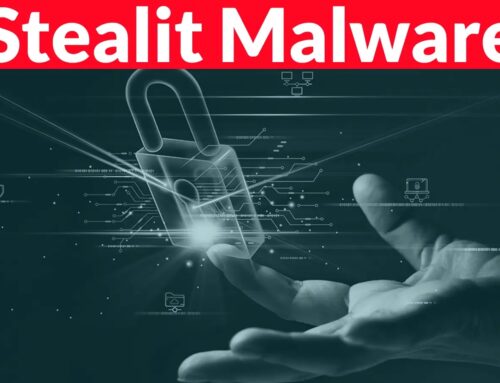
CastleBot Malware-as-a-Service Deploys Range of Payloads Linked to Ransomware Attacks
The cybersecurity landscape has been rocked by the emergence of CastleBot, a sophisticated new player in the Malware-as-a-Service (MaaS) arena. Operating as a highly adaptable platform for cybercriminals, CastleBot facilitates the deployment of a diverse array of malicious payloads, ranging from insidious infostealers to persistent backdoors directly linked to ransomware attacks. This framework represents a significant escalation in threat capabilities, demanding immediate attention from security professionals and organizations globally.
Understanding CastleBot: A New Breed of MaaS
First observed in early 2025, CastleBot has quickly distinguished itself through its remarkable technical sophistication and adaptability. Unlike simpler malware variants, CastleBot functions as a comprehensive MaaS platform, providing its subscribers with the tools and infrastructure to execute a wide spectrum of cyberattacks. This democratization of advanced attack capabilities lowers the barrier to entry for less skilled threat actors, amplifying the overall threat landscape.
The core functionality of CastleBot lies in its modular design, allowing operators to select and deploy various components based on their attack objectives. This flexibility makes it a potent weapon for a range of illicit activities, from data exfiltration to complete system compromise. The MaaS model also ensures a continuous development cycle, with updates and new features being rolled out, further enhancing its evasive capabilities and payload options.
Diverse Payload Capabilities and Ransomware Links
CastleBot’s true danger stems from its ability to facilitate the deployment of an extensive range of malicious payloads. These include:
- Infostealers: Designed to siphon sensitive information such as credentials, financial data, and personal identifiable information (PII) from compromised systems.
- Backdoors: Establishing persistent access to networks, allowing threat actors to maintain a foothold for future operations, including data exfiltration or the deployment of additional malware.
- Loaders: Acting as initial compromise agents, designed to download and execute further malicious code.
- Trojans: Masquerading as legitimate software to deceive users into installing them, then performing covert malicious activities.
Crucially, CastleBot has been directly linked to the precursor activities for ransomware attacks. Its backdoor capabilities allow ransomware operators to gain initial access, establish persistence, and conduct reconnaissance before deploying their encryptors. This makes CastleBot a significant enabler for the devastating financial and operational impacts of ransomware.
The Malware-as-a-Service Business Model
The MaaS model adopted by CastleBot highlights a growing trend in cybercrime. This illicit business structure mirrors legitimate software services, offering subscribers access to pre-built, maintained, and updated malware tools. This not only makes advanced attacks more accessible but also streamlines the process for cybercriminals, allowing them to focus on target selection and exploitation rather than the complex development of malware from scratch.
Key characteristics of the MaaS model, as seen with CastleBot, include:
- Subscription-based access to the malware framework.
- Technical support and updates provided by the developers.
- User-friendly interfaces for deploying and managing attacks.
- Often includes infrastructure for command and control (C2) communication.
Remediation Actions and Proactive Defenses
Given the severe threat posed by CastleBot, organizations must implement robust and multi-layered cybersecurity defenses. Proactive measures are paramount to detect, prevent, and respond to potential compromises.
- Endpoint Detection and Response (EDR): Deploy and actively monitor EDR solutions capable of detecting anomalous behavior and identifying advanced persistent threats that CastleBot might introduce.
- Network Segmentation: Implement strict network segmentation to limit lateral movement within the network, even if an initial compromise occurs.
- Vulnerability Management: Regularly scan for and patch vulnerabilities across all systems and applications. While CastleBot itself isn’t a vulnerability, it exploits vulnerabilities for initial access. Keep an eye on new CVEs like CVE-2023-38831 (WinRAR vulnerability for potential initial access) or CVE-2023-35640 (Windows MSHTML Remote Code Execution).
- Security Awareness Training: Educate employees about phishing, social engineering, and safe browsing practices, as these are common initial vectors for malware delivery.
- Robust Backup and Recovery Strategy: Implement immutable and offline backups to ensure business continuity in the event of a ransomware attack facilitated by CastleBot.
- Principle of Least Privilege: Enforce the principle of least privilege for all user accounts and applications, limiting the potential damage from a compromised account.
- Application Whitelisting: Implement application whitelisting to prevent unauthorized executables from running on endpoints.
Tools for Detection and Mitigation
| Tool Name | Purpose | Link |
|---|---|---|
| CrowdStrike Falcon Insight | Endpoint Detection & Response (EDR) | https://www.crowdstrike.com/products/endpoint-security/falcon-insight-edr/ |
| Nessus (Tenable) | Vulnerability Scanning | https://www.tenable.com/products/nessus |
| Microsoft Defender for Endpoint | Endpoint Security & EDR | https://www.microsoft.com/en-us/security/business/threat-protection/microsoft-defender-for-endpoint |
| Splunk Enterprise Security | SIEM & Security Analytics | https://www.splunk.com/en_us/software/splunk-enterprise-security.html |
Conclusion
The emergence of CastleBot as a sophisticated MaaS platform underscores the evolving nature of cyber threats. Its modularity, diverse payload capabilities, and direct links to ransomware attacks position it as a significant concern for all organizations. By understanding its operational model and implementing robust defensive measures, including advanced security tooling and comprehensive employee training, organizations can significantly bolster their resilience against this potent new adversary and similar threats in the future. Vigilance and proactive security hygiene are no longer optional but essential in safeguarding digital assets.





